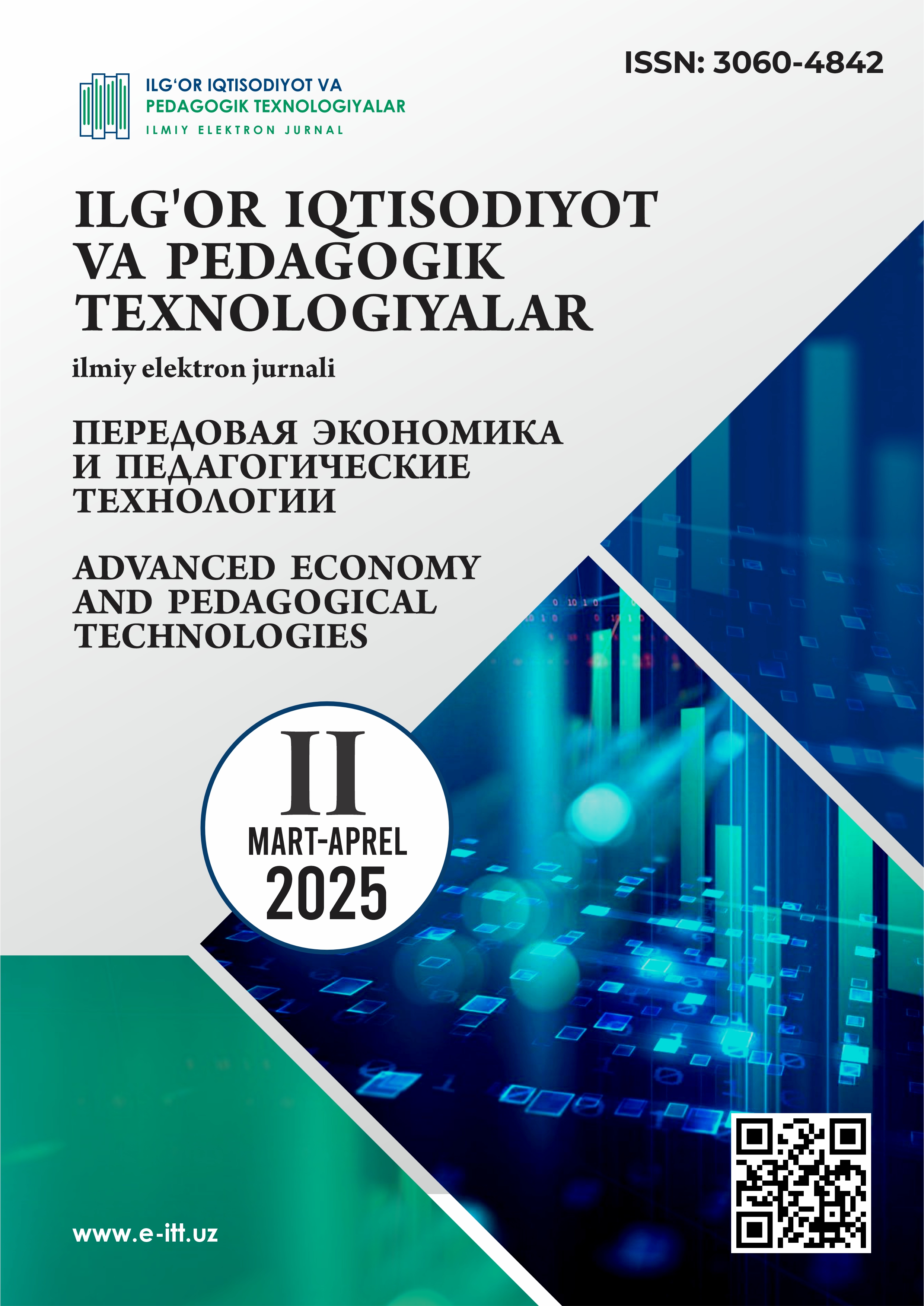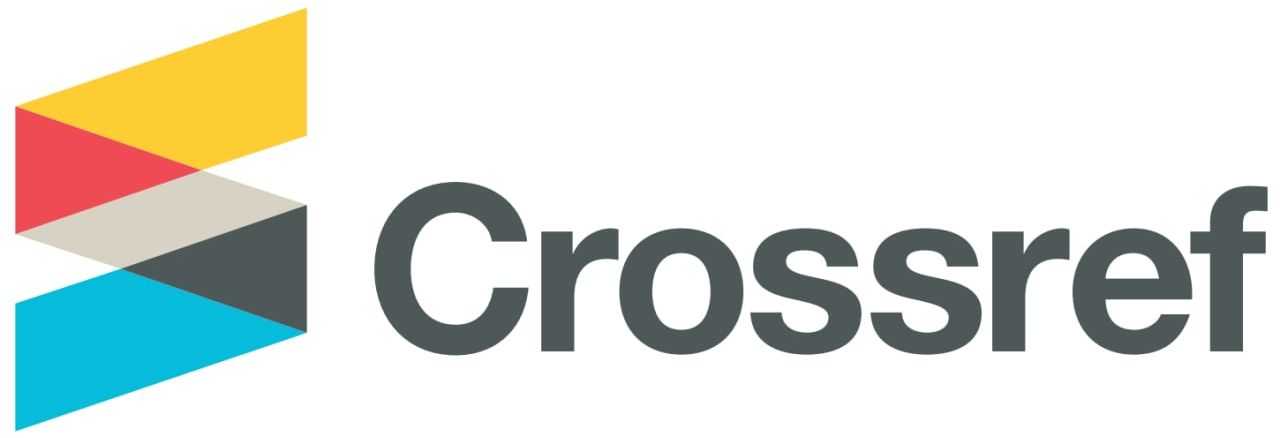AN EMPIRICAL ANALYSIS OF THE IMPACT OF ICT AND EXPORT DIVERSIFICATION ON INCOME INEQUALITY
DOI:
https://doi.org/10.60078/3060-4842-2025-vol2-iss2-pp163-180Abstract
This paper aims to study the relationship between ICT development, export diversification, and income inequality. The study is based on the analysis of data for 83 countries from 2002 to 2019 using the panel quantile regression method. The results of the analysis indicate that ICT has a negative impact on the level of income inequality, and this effect is more pronounced in countries with a high Gini coefficient. Export diversification also contributes to a more equal income distribution, and this effect is more pronounced in countries with low and medium levels of inequality. Moreover, the interaction of the ICT index with the export concentration index has a negative effect on income inequality, and the effect is stronger at the upper quantiles of the distribution. Accordingly, countries with high income inequality should pay special attention to the digitalization of the economy and strengthening export diversification.
Keywords:
неравенство доходов концентрация экспорта диверсификация экспорта коэффициент Джини индекс ИКТ индекс товарной концентрации экспортаReferences
Adams, S., & Akobeng, E. (2021). ICT, governance and inequality in Africa. Telecommunications Policy, 45(10), 102198.
Aiyar, S., & Ebeke, C. (2020). Inequality of opportunity, inequality of income and economic growth. World Development, 136, 105115.
Amber, H., & Chichaibelu, B. B. (2023). Narrowing the gender digital divide in Pakistan: Mobile phone ownership and female labor force participation. Review of Development Economics, 27(3), 1354-1382.
Andrews, D., Criscuolo, C., & Gal, P. (2016). The global productivity slowdown, technology divergence and public policy: a firm level perspective. Brookings Institution Hutchins Center Working Paper, 24.
Antràs, P., De Gortari, A., & Itskhoki, O. (2017). Globalization, inequality and welfare. Journal of International Economics, 108, 387-412.
Asteriou, D., Dimelis, S., & Moudatsou, A. (2014). Globalization and income inequality: A panel data econometric approach for the EU27 countries. Economic modelling, 36, 592-599.
Babones, S. J., & Vonada, D. C. (2009). Trade globalization and national income inequality—are they related? Journal of Sociology, 45(1), 5-30.
Basu, P., & Guariglia, A. (2007). Foreign direct investment, inequality, and growth. Journal of Macroeconomics, 29(4), 824-839.
Bebczuk, R. N., & Berrettoni, D. (2006). Explaining export diversification: an empirical analysis. Documentos de Trabajo.
Belsley, D. A., Kuh, E., & Welsch, R. E. (2005). Regression diagnostics: Identifying influential data and sources of collinearity. John Wiley & Sons.
Blancheton, B., & Chhorn, D. (2019). Export diversification, specialisation and inequality: Evidence from Asian and Western countries. The Journal of International Trade & Economic Development, 28(2), 189-229.
Blancheton, B., & Chhorn, D. (2019). Export diversification, specialisation and inequality: Evidence from Asian and Western countries. The Journal of International Trade & Economic Development, 28(2), 189-229.
Born, B., & Breitung, J. (2016). Testing for serial correlation in fixed-effects panel data models. Econometric Reviews, 35(7), 1290-1316.
Brueckner, M., & Lederman, D. (2018). Inequality and economic growth: the role of initial income. Journal of Economic Growth, 23, 341-366.
Bunyan, S., & Collins, A. (2013). Digital exclusion despite digital accessibility: empirical evidence from an English City. Tijdschrift voor economische en sociale geografie, 104(5), 588-603.
Cabral, R., García-Díaz, R., & Mollick, A. V. (2016). Does globalization affect top income inequality? Journal of Policy Modeling, 38(5), 916-940.
Cadot, O., Carrère, C., & Strauss-Kahn, V. (2011). Export diversification: what's behind the hump? Review of Economics and Statistics, 93(2), 590-605.
Cadot, O., Carrère, C., & Strauss‐Kahn, V. (2013). Trade diversification, income, and growth: what do we know? Journal of Economic Surveys, 27(4), 790-812.
Castelló-Climent, A., & Doménech, R. (2021). Human capital and income inequality revisited. Education Economics, 29(2), 194-212.
Castells, M. (2002). The Internet galaxy: Reflections on the Internet, business, and society. Oxford University Press.
Cerra, V., Lama, R., & Loayza, N. V. (2021). Links between growth, inequality, and poverty. International Monetary Fund, 68, 1-54.
Choi, I. (2001). Unit root tests for panel data. Journal of international money and Finance, 20(2), 249-272.
Ciccone, A., & Papaioannou, E. (2009). Human capital, the structure of production, and growth. The review of economics and statistics, 91(1), 66-82.
Erman, L., & te Kaat, D. M. (2019). Inequality and growth: industry-level evidence. Journal of Economic Growth, 24, 283-308.
Ezzat, A. (2023). Effects of Foreign Direct Investment on Wage Inequality in Developing Countries: Do recipient sectors matter? Scientific Journal for Financial and Commercial Studies and Research, 4(1), 587-618.
Galperin, H., & Arcidiacono, M. (2021). Employment and the gender digital divide in Latin America: A decomposition analysis. Telecommunications Policy, 45(7), 102166.
Gam, T. T. H., Oanh, D. L. K., & Dang, N. M. B. (2023). The impact of foreign direct investment on income inequality in developing countries: The Bayesian approach. Jurnal Ekonomi & Studi Pembangunan, 24(1), 127-143.
Gnangnon, S. K. (2020). Poverty and export product diversification in developing countries. The Journal of International Trade & Economic Development, 29(2), 211-236.
Guo, D., Jiang, K., Xu, C., & Yang, X. (2022). Industrial clustering, income and inequality in rural China. World Development, 154, 105878.
Haskel, J., & Westlake, S. (2017). Capitalism without capital: The rise of the intangible economy.
Hausman, J. (2015). Specification tests in econometrics. Applied Econometrics, 38(2), 112-134.
Heckman, J. J., & Yi, J. (2012). Human capital, economic growth, and inequality in China (No. w18100). National Bureau of Economic Research.
Holmes, H., & Burgess, G. (2022). Digital exclusion and poverty in the UK: How structural inequality shapes experiences of getting online. Digital Geography and Society, 3, 100041.
Hu, Z. (2021). The effect of income inequality on human capital inequality: Evidence from China. Structural Change and Economic Dynamics, 58, 471-489.
Imbs, J., & Wacziarg, R. (2003). Stages of diversification. American economic review, 93(1), 63-86.
ITU (2017). The ICT Development Index (IDI): conceptual framework and methodology. International Telecommunication Union. Available at: https://www.itu.int/en/ITU-D/Statistics/Pages/publications/mis2017/methodology.aspx.
Jackson, J. E. (2005). A user's guide to principal components. John Wiley & Sons.
Joiner, R., Stewart, C., & Beaney, C. (2015). Gender digital divide: does it exist and what are the explanations?. The Wiley handbook of psychology, technology, and society, 74-88.
Judge, G. G., Griffiths, W. E., Hill, R. C., Lütkepohl, H., & Lee, T. C. (1991). The theory and practice of econometrics. John Wiley & sons.
Klinger, B., & Lederman, D. (2006). Diversification, innovation, and imitation inside the global technological frontier. World Bank policy research working paper, (3872).
Kuznets, S. (2019). Economic growth and income inequality. In The gap between rich and poor (pp. 25-37). Routledge.
Le, T. H., Nguyen, C. P., Su, T. D., & Tran-Nam, B. (2020). The Kuznets curve for export diversification and income inequality: Evidence from a global sample. Economic Analysis and Policy, 65, 21-39.
Lee, C. C., Yuan, Z., & Ho, S. J. (2022). How does export diversification affect income inequality? International evidence. Structural Change and Economic Dynamics, 63, 410-421.
Lee, J. W., & Lee, H. (2018). Human capital and income inequality. Journal of the Asia Pacific Economy, 23(4), 554-583.
Li, D., Wang, X., Xu, Y., & Ren, Y. (2022). Analysis of export diversification and impact of globalisation on income inequality: Evidence from Asian countries. Global Economic Review, 51(3), 195-215.
Machado, J. A., & Silva, J. S. (2019). Quantiles via moments. Journal of econometrics, 213(1), 145-173.
Mehic, A. (2018). Industrial employment and income inequality: Evidence from panel data. Structural Change and Economic Dynamics, 45, 84-93.
Mihaylova, S. (2015). Foreign direct investment and income inequality in Central and Eastern Europe. Theoretical & Applied Economics, 22(2).
OECD (2018). A Broken Social Elevator? How to Promote Social Mobility. OECD Publishing, Paris. https://doi.org/10.1787/9789264301085-en.
Ouedraogo, R., & Mineyama, T. (2023). Fostering Export Diversification in: Niger. International Monetary Fund.
Pesaran, M. H. (2021). General diagnostic tests for cross-sectional dependence in panels. Empirical economics, 60(1), 13-50.
Qureshi, Z. (2019). Inequality in the digital era. Work in the Age of Data, 3-13.
Ravinthirakumaran, K., & Ravinthirakumaran, N. (2018). The impact of foreign direct investment on income inequality: a panel Autogressive Distributed Lag approach for the Asia-Pacific Economic Cooperation developing economies. Asia-Pacific Sustainable Development Journal, 25(1), 57-84.
Rezk, H., Amer, G., Fathi, N., & Sun, S. (2022). The impact of FDI on income inequality in Egypt. Economic change and restructuring, 55(3), 2011-2030.
Robinson, L. (2009). A taste for the necessary: A Bourdieuian approach to digital inequality. Information, Communication & Society, 12(4), 488-507.
Rosés, J. R., Martínez-Galarraga, J., & Tirado, D. A. (2010). The upswing of regional income inequality in Spain (1860–1930). Explorations in Economic History, 47(2), 244-257.
Scheerder, A., Van Deursen, A., & Van Dijk, J. (2017). Determinants of Internet skills, uses and outcomes. A systematic review of the second-and third-level digital divide. Telematics and informatics, 34(8), 1607-1624.
Shahpari, G., & Davoudi, P. (2014). Studying effects of human capital on income inequality in Iran. Procedia-Social and behavioral sciences, 109, 1386-1389.
Shuangshuang, Y., Zhu, W., Mughal, N., Aparcana, S. I. V., & Muda, I. (2023). The impact of education and digitalization on female labour force participation in BRICS: an advanced panel data analysis. Humanities and Social Sciences Communications, 10(1), 1-9.
Siami-Namini, S., & Hudson, D. (2019). Inflation and income inequality in developed and developing countries. Journal of Economic Studies, 46(3), 611-632.
Sultanova, G., & Naser, H. (2024). The impact of information and communication technologies on export diversification: Evidence from developing countries. The Journal of International Trade & Economic Development, 1-35.
Takpara, M. M., Djiogap, C. F., & Sawadogo, B. (2022). Trade Facilitation and Export Diversification in Sub-Saharan Africa: Role of Hard and Soft Infrastructure.
Tchitchoua, J., Tsomb Tsomb, E. I. B., & Madomo, J. (2024). Export diversification and income inequality in Central Africa: An analysis of the employment channel. The Journal of International Trade & Economic Development, 33(4), 618-643.
Tewathia, N., Kamath, A., & Ilavarasan, P. V. (2020). Social inequalities, fundamental inequities, and recurring of the digital divide: Insights from India. Technology in society, 61, 101251.
Topuz, S. G. (2022). The relationship between income inequality and economic growth: are transmission channels effective? Social Indicators Research, 162(3), 1177-1231.
UN (2018). 2018 Reports to the Economic and Social Council. United Nations. https://www.un.org/development/desa/dpad/publication/2018-reports-to-the-economic-and-social-council/
UNCTADstat. Indicators explained. Available at: https://unctadstat.unctad.org/en/IndicatorsExplained/statie2019d1_en.pdf.
Warren, M. (2007). The digital vicious cycle: Links between social disadvantage and digital exclusion in rural areas. Telecommunications policy, 31(6-7), 374-388.
Watts, G. (2020). COVID-19 and the digital divide in the UK. The Lancet Digital Health, 2(8), e395-e396.
World inequality report (2022) https://wir2022.wid.world/executive-summary







